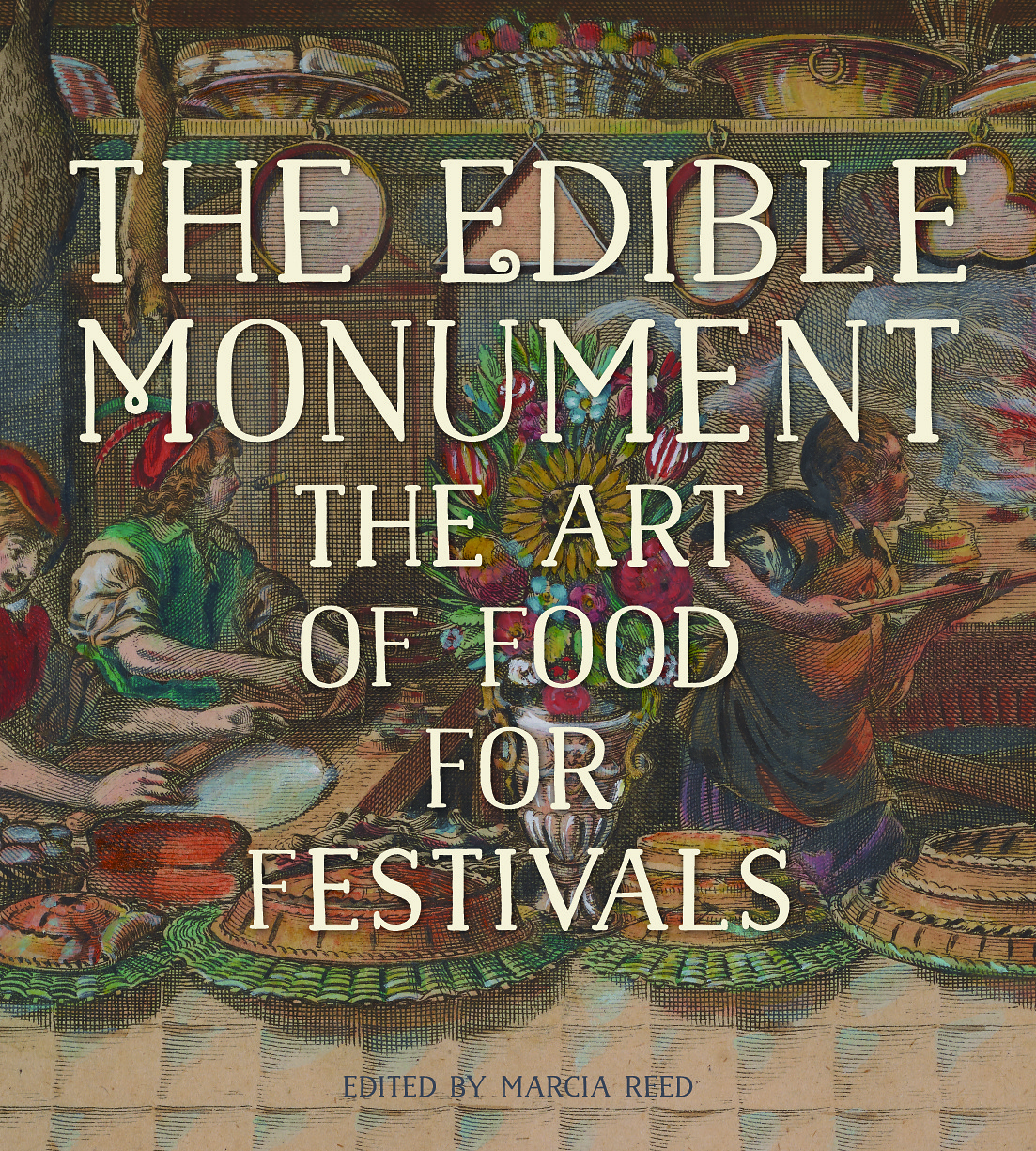
THE EDIBLE MONUMENT: The Art of Food for Festivals
Edited by Marcia Reed with contributions by Charissa Bremer-David, Joseph Imorde, Marcia Reed, and Anne Willan
Getty Publications
October 2015
$35/Hardcover
ISBN: 978-1-60606-454-2
Edited by Marcia Reed with contributions by Charissa Bremer-David, Joseph Imorde, Marcia Reed, and Anne Willan
Getty Publications
October 2015
$35/Hardcover
ISBN: 978-1-60606-454-2
Marcia Reed is chief curator at the Getty Research Institute. She is coeditor of China on Paper (Getty Publications, 2007).
Charissa Bremer-David is associate curator of sculpture and decorative arts at the J. Paul Getty Museum. She is an expert on French decorative arts, especially tapestries, and is the author of French Tapestries and Textiles in the J. Paul Getty Museum. She curated the “Rhino-mania” portion of the exhibition Oudry’s Painted Menagerie and is co-author of the exhibition catalogue. Join Bremer-David for an exploration of the artistic and scientific impact of Clara, the 18th-century celebrity rhinoceros, in a free lecture on Thursday, June 21, 2007, and tour the exhibition galleries with her in a free curator’s gallery talk on Thursday, June 28, 2007.
Joseph Imorde is Associate Professor in the Department of History of Art at the University of Siegen, Germany. He is a scholar of Baroque art and art history.
Anne Willan has had an extraordinary career in the culinary arts and is recognized as one of the world’s preeminent authorities on French cooking. She founded École de Cuisine La Varenne in Paris in 1975.
The Edible Monument considers the elaborate architecture, sculpture, and floats made of food that were designed for court and civic celebrations in early modern Europe. These include popular festivals such as Carnival and the Italian Cuccagna. Like illuminations and fireworks, ephemeral artworks made of food were not well documented and were challenging to describe because they were perishable and thus quickly consumed or destroyed. In times before photography and cookbooks, there were neither literary models nor a repertoire of conventional images for how food and its preparation should be explained or depicted.
Although made for consumption, food could also be a work of art, both as a special attraction and as an expression of power. Formal occasions and spontaneous celebrations drew communities together, while special foods and seasonal menus revived ancient legends, evoking memories and recalling shared histories, values, and tastes.
Drawing on books, prints, and scrolls that document festival arts, elaborate banquets, and street feasts, the essays in this volume examine the mythic themes and personas employed to honor and celebrate rulers; the methods, materials, and wares used to prepare, depict, and serve food; and how foods such as sugar were transformed to express political goals or accomplishments.
This book is published on the occasion of an exhibition at the Getty Research Institute from October 13, 2015, to March 23, 2016.